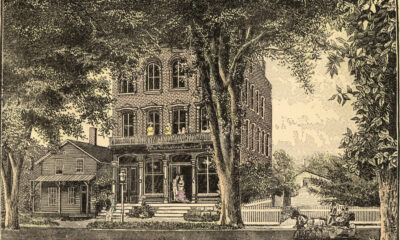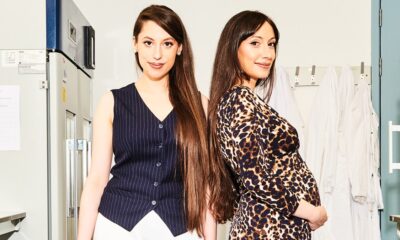Science
Scientists Explore Cloning Neanderthals Using Ancient DNA

Scientists are investigating the possibility of cloning a Neanderthal using DNA extracted from remains that are approximately 40,000 years old. By isolating a complete Neanderthal genome from ancient bone fragments, researchers believe they could potentially combine it with human stem cells to create a modern-day caveman or cavewoman. This process would involve implanting the genome and stem cells into a human surrogate, resulting in the birth of a Neanderthal child.
Earlier this year, Colossal Biosciences Inc. made headlines by successfully cloning the extinct dire wolf, using DNA from a 72,000-year-old skull and a tooth discovered in the United States. This breakthrough marked a significant step in the field of de-extinction, prompting discussions about the feasibility of resurrecting Neanderthals, who vanished more than 40,000 years ago.
The potential cloning of a Neanderthal raises complex ethical questions. Some scientists argue that the inherent differences between modern humans and Neanderthals would pose significant challenges for a cloned individual in contemporary society. Research indicates that Homo sapiens and Neanderthals interbred between 40,000 and 55,000 years ago, resulting in modern humans possessing 1-4% Neanderthal DNA. This genetic connection highlights the close relationship between the two species, with only a 0.5% difference in DNA.
At the Max Planck Institute for Evolutionary Anthropology in Leipzig, Germany, experts have analyzed over 70 Neanderthal specimens. They found that only one, a 38,000-year-old bone fragment from a cave in Croatia, yielded a suitable DNA sample. The pioneering work of Svante Pääbo, a founding director of the institute and a Nobel Prize laureate in 2022, has been instrumental in reconstructing the full Neanderthal genome. He posited that if Neanderthals had survived another 40,000 years, their presence might have significantly influenced human society and perceptions of diversity.
Despite the exciting prospects of cloning, Pääbo expressed strong ethical concerns about bringing a Neanderthal to life, emphasizing that morals would prevent such an experiment. In contrast, some scientists are more supportive of the idea. Anthropologist Bruce Taylor stated that with the right team and resources, a cloned Neanderthal could be educated similarly to modern children, potentially resulting in a being that shares more similarities than differences with contemporary humans.
The question of whether to resurrect the Neanderthal species has sparked varied opinions among experts. American theologian Ronald Green argued for the moral imperative to bring back a species that was “wrongly pushed off the stage of history.” Geneticist George Church has outlined a scientific pathway to achieve this, detailing the steps necessary to sequence, synthesize, and assemble the Neanderthal genome within human stem cells.
The scientific community continues to grapple with the implications of such advancements. While the prospect of cloning a Neanderthal remains a topic of heated debate, it illustrates the evolving intersection of genetics, ethics, and our understanding of human evolution. As researchers push the boundaries of what is possible, the conversation surrounding the revival of ancient species is likely to grow more complex and nuanced.
-

 Entertainment3 months ago
Entertainment3 months agoAnn Ming Reflects on ITV’s ‘I Fought the Law’ Drama
-

 Entertainment4 months ago
Entertainment4 months agoKate Garraway Sells £2 Million Home Amid Financial Struggles
-

 Health3 months ago
Health3 months agoKatie Price Faces New Health Concerns After Cancer Symptoms Resurface
-

 Entertainment3 months ago
Entertainment3 months agoCoronation Street’s Carl Webster Faces Trouble with New Affairs
-

 Entertainment3 months ago
Entertainment3 months agoWhere is Tinder Swindler Simon Leviev? Latest Updates Revealed
-

 World2 weeks ago
World2 weeks agoBailey Announces Heartbreaking Split from Rebecca After Reunion
-

 Entertainment2 weeks ago
Entertainment2 weeks agoCoronation Street Fans React as Todd Faces Heartbreaking Choice
-

 Entertainment4 months ago
Entertainment4 months agoMarkiplier Addresses AI Controversy During Livestream Response
-

 Science1 month ago
Science1 month agoBrian Cox Addresses Claims of Alien Probe in 3I/ATLAS Discovery
-

 Health5 months ago
Health5 months agoCarol Vorderman Reflects on Health Scare and Family Support
-

 Entertainment4 months ago
Entertainment4 months agoKim Cattrall Posts Cryptic Message After HBO’s Sequel Cancellation
-

 Entertainment3 months ago
Entertainment3 months agoOlivia Attwood Opens Up About Fallout with Former Best Friend




















